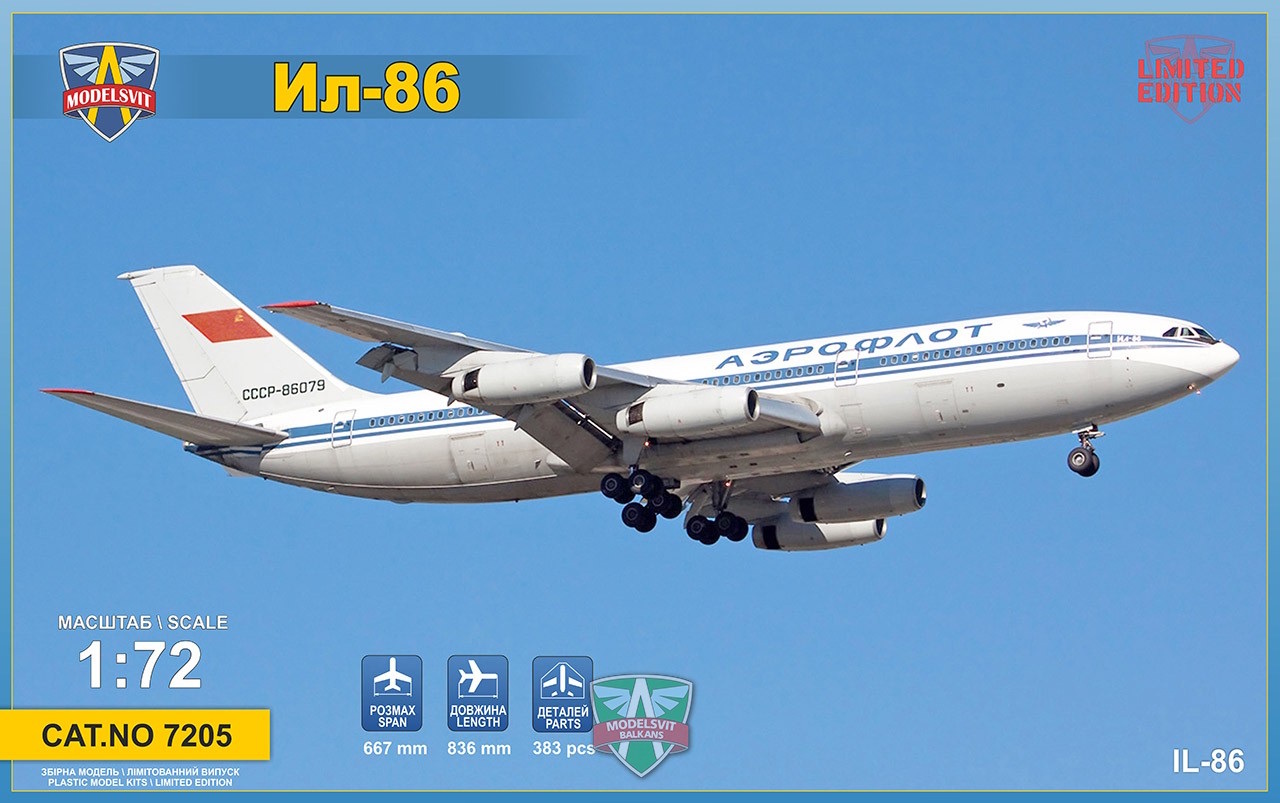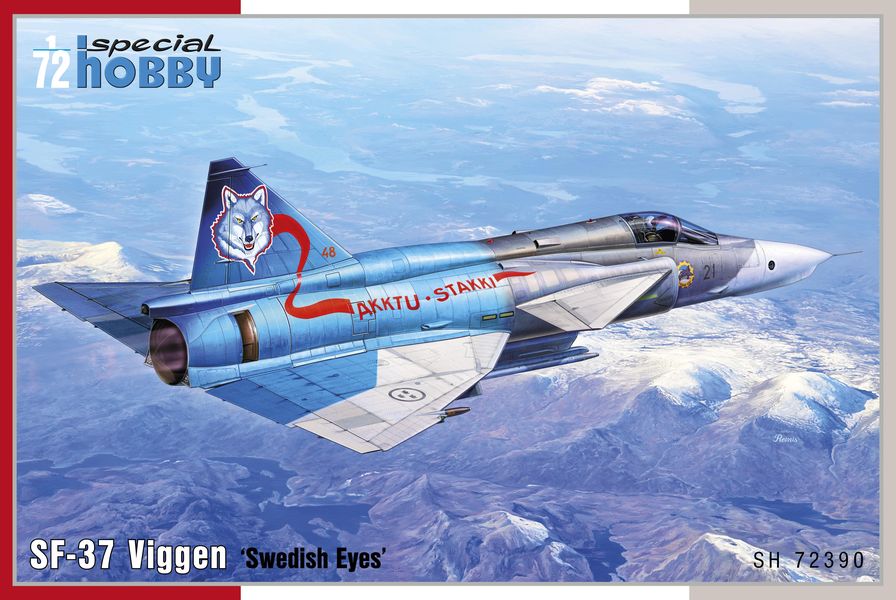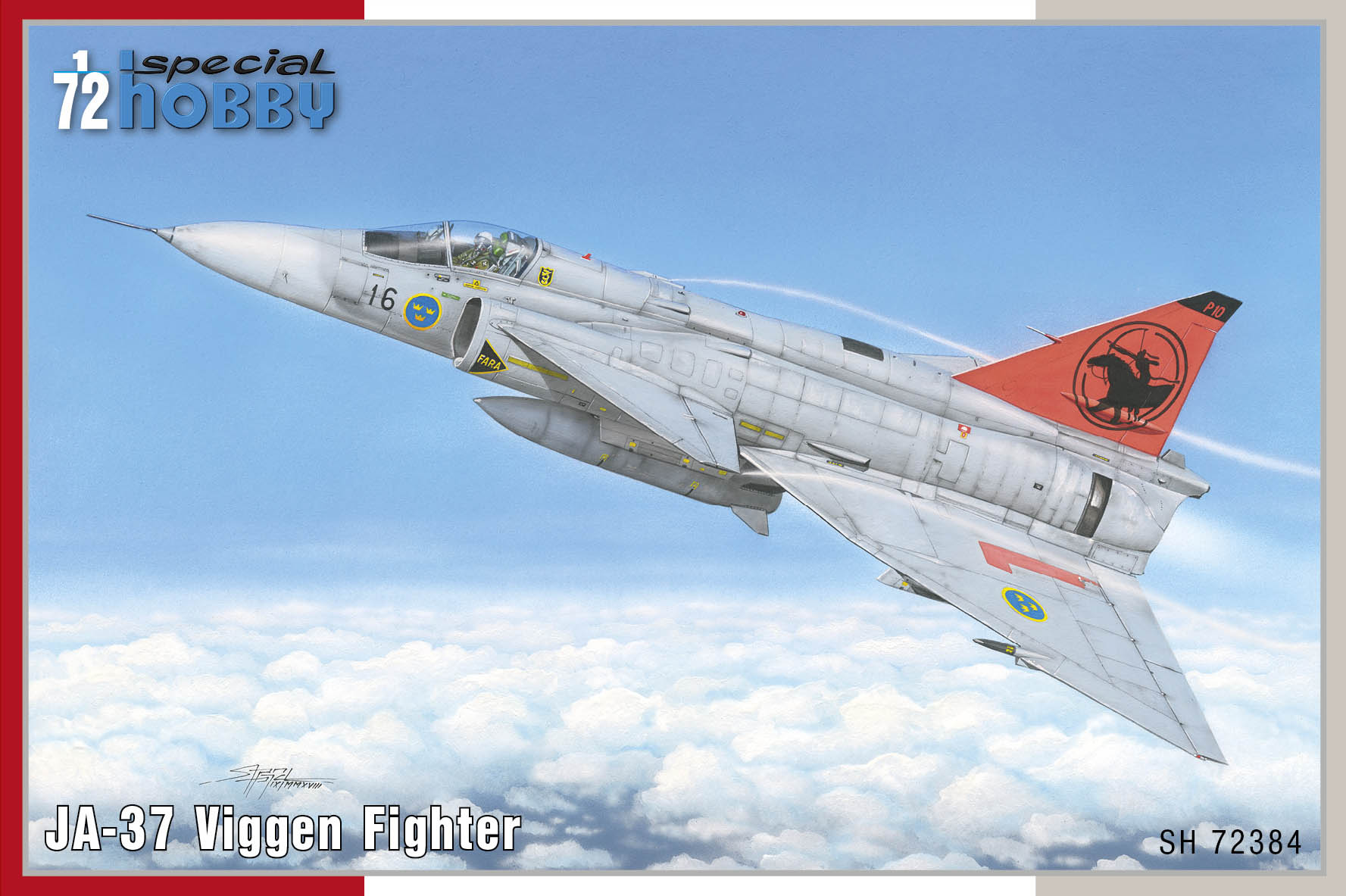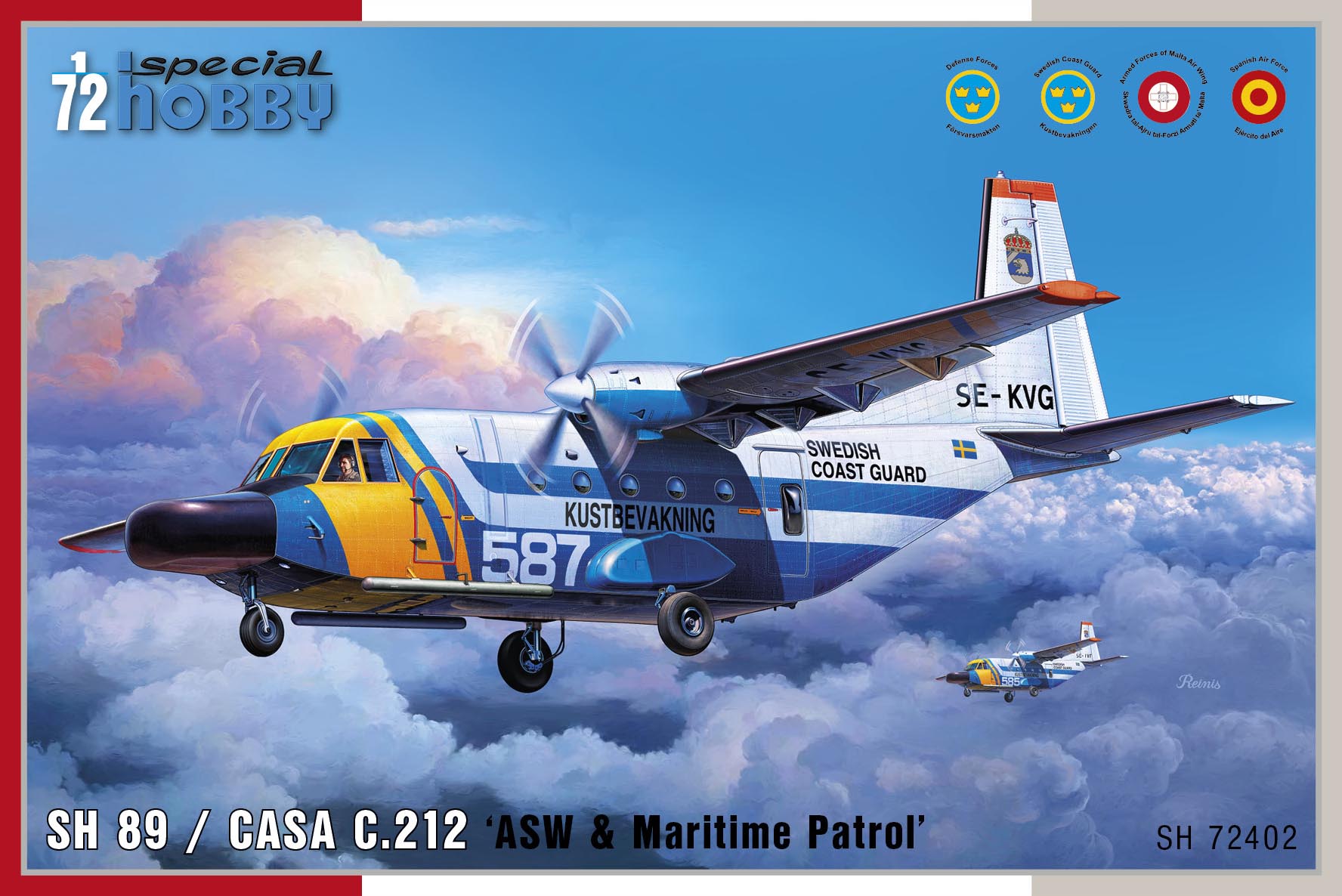Dětské zboží
Celkem 107 produktů
Plastikový model letadla 1/32 T-33 'Japan and South American T-Birds'. Model of one of the most famous trainer aeroplane ever built in the US, no else jet trainer has been produced in larger numbers than the T-33. With the exception of Antarctica and Australia, the T-bird was operated world-wide. The kit offers – six styrene sprues, one sprue with clear parts, full colour instruction manual, pre-painted photo etches, resin cast details and a sheet of decals. Nicely detailed model Etches and resin set already in the box Famous machine wearing unique colour schemes Decals offer a sharkmouthed machine flown in Guatemala, a Peruvian T-33 and one as operated by the JASDF. Country of origin: USA / Modern
Plastikový model letadla 1/32 T-33 'Japan and South American T-Birds'. Model of one of the most famous trainer aeroplane ever built in the US, no else jet trainer has been produced in larger numbers than the T-33. With the exception of Antarctica and Australia, the T-bird was operated world-wide. The kit offers – six styrene sprues, one sprue with clear parts, full colour instruction manual, pre-painted photo etches, resin cast details and a sheet of decals. Nicely detailed model Etches and resin set already in the box Famous machine wearing unique colour schemes Decals offer a sharkmouthed machine flown in Guatemala, a Peruvian T-33 and one as operated by the JASDF. Country of origin: USA / Modern
Plastikový model letadla 1/72 SF-37 Viggen ‘Swedish Eyes’. Reconnaissance version of the Viggen aeroplane, can be distinguished from all the others by having a different-shaped nose section carrying photographic cameras instead of radar equipment. superbly detailed and really accurate model decals for three machines including the anniversary airframe with a painting of the lone wolf on its tail wide range of detail resin sets, pilot figures and pre-cut canopy masks available too
Plastikový model letadla 1/72 SF-37 Viggen ‘Swedish Eyes’. Reconnaissance version of the Viggen aeroplane, can be distinguished from all the others by having a different-shaped nose section carrying photographic cameras instead of radar equipment. superbly detailed and really accurate model decals for three machines including the anniversary airframe with a painting of the lone wolf on its tail wide range of detail resin sets, pilot figures and pre-cut canopy masks available too
Plastikový model letadla 1/72 JA-37 Viggen. Model of the second generation of the Viggen fighter aircraft which featured longer fuselage and more powerful engine. Content of the kit: eight parts on styrene sprues, one clear styrene sprue, full colour instruction booklet, a sheet of decals highly accurate and finely detailed model, the top notch 1/72 Viggen currently on the market decals cater for three machines one of which sports eyecatching anniversary scheme with red tail fin and a rider on it. wide range of detail sets and figures with ladders available. Country of origin: Sweden / modern
Plastikový model letadla 1/72 JA-37 Viggen. Model of the second generation of the Viggen fighter aircraft which featured longer fuselage and more powerful engine. Content of the kit: eight parts on styrene sprues, one clear styrene sprue, full colour instruction booklet, a sheet of decals highly accurate and finely detailed model, the top notch 1/72 Viggen currently on the market decals cater for three machines one of which sports eyecatching anniversary scheme with red tail fin and a rider on it. wide range of detail sets and figures with ladders available. Country of origin: Sweden / modern
Plastikový model letadla 1/72 SH 89 / CASA C.212 'ASW & Maritime Patrol' . The CASA C.212 is a Spanish turboprop-powered STOL cargo aircraft that has seen service with a wide range of countries and flew in many different roles, one of them being maritime surveillance and patrol. Machines fitted for this sort of tasks carry radar antennae in distinctive, duck beak like shaped radomes at the front of the fuselage as well as some more electronics equipment within the airframe. Highly accurate and nicely detailed model Precisely designed sheet of decals offering markings for two Swedish airframes in different colour schemes, one Malta-based machine and a Spanish one. Specific antenna arrays made of resin and photo-etches Double-slotted wing flaps – resin set no.7407 – is recommended for discerning modeller
Plastikový model letadla 1/72 SH 89 / CASA C.212 'ASW & Maritime Patrol' . The CASA C.212 is a Spanish turboprop-powered STOL cargo aircraft that has seen service with a wide range of countries and flew in many different roles, one of them being maritime surveillance and patrol. Machines fitted for this sort of tasks carry radar antennae in distinctive, duck beak like shaped radomes at the front of the fuselage as well as some more electronics equipment within the airframe. Highly accurate and nicely detailed model Precisely designed sheet of decals offering markings for two Swedish airframes in different colour schemes, one Malta-based machine and a Spanish one. Specific antenna arrays made of resin and photo-etches Double-slotted wing flaps – resin set no.7407 – is recommended for discerning modeller
Plastikový model letadla 1/72 Avro Rota C.30A 4 decal v. for Czeczslovak.,RAF, Yugoslavia, Australia. The first production design in the series was the C.30, a radial-engined autogyro with a three-blade, 37 ft (11.3 m) rotor mounted on an aft-leaning tripod, the control column extending into the rear of the two cockpits. The engine was the five-cylinder, 105 hp (78 kW) Armstrong Siddeley Genet Major I used in the C.19 series. The fabric-covered fuselage carried an unbraced tailplane, without elevators but with turned-up tips. The port side of the tailplane had an inverted aerofoil section to counter roll-axis torque produced by the propeller. As with most autogyros, a high vertical tail was precluded by the sagging resting rotor, so the dorsal fin was long and low, extending well aft of the tailplane like a fixed rudder and augmented by a ventral fin. The wide-track undercarriage had a pair of single, wire-braced legs and a small tail wheel was fitted. This model flew in April 1933. It was followed by four improved machines designated C.30P (P here for pre-production) which differed in having a four-legged pyramid rotor mounting and a reinforced undercarriage with three struts per side. The rotor could be folded rearwards for transport. The C.30P used the more powerful (140 hp, 104 kW) seven-cylinder Armstrong Siddeley Genet Major IA radial engine.
Plastikový model letadla 1/72 Avro Rota C.30A 4 decal v. for Czeczslovak.,RAF, Yugoslavia, Australia. The first production design in the series was the C.30, a radial-engined autogyro with a three-blade, 37 ft (11.3 m) rotor mounted on an aft-leaning tripod, the control column extending into the rear of the two cockpits. The engine was the five-cylinder, 105 hp (78 kW) Armstrong Siddeley Genet Major I used in the C.19 series. The fabric-covered fuselage carried an unbraced tailplane, without elevators but with turned-up tips. The port side of the tailplane had an inverted aerofoil section to counter roll-axis torque produced by the propeller. As with most autogyros, a high vertical tail was precluded by the sagging resting rotor, so the dorsal fin was long and low, extending well aft of the tailplane like a fixed rudder and augmented by a ventral fin. The wide-track undercarriage had a pair of single, wire-braced legs and a small tail wheel was fitted. This model flew in April 1933. It was followed by four improved machines designated C.30P (P here for pre-production) which differed in having a four-legged pyramid rotor mounting and a reinforced undercarriage with three struts per side. The rotor could be folded rearwards for transport. The C.30P used the more powerful (140 hp, 104 kW) seven-cylinder Armstrong Siddeley Genet Major IA radial engine.





